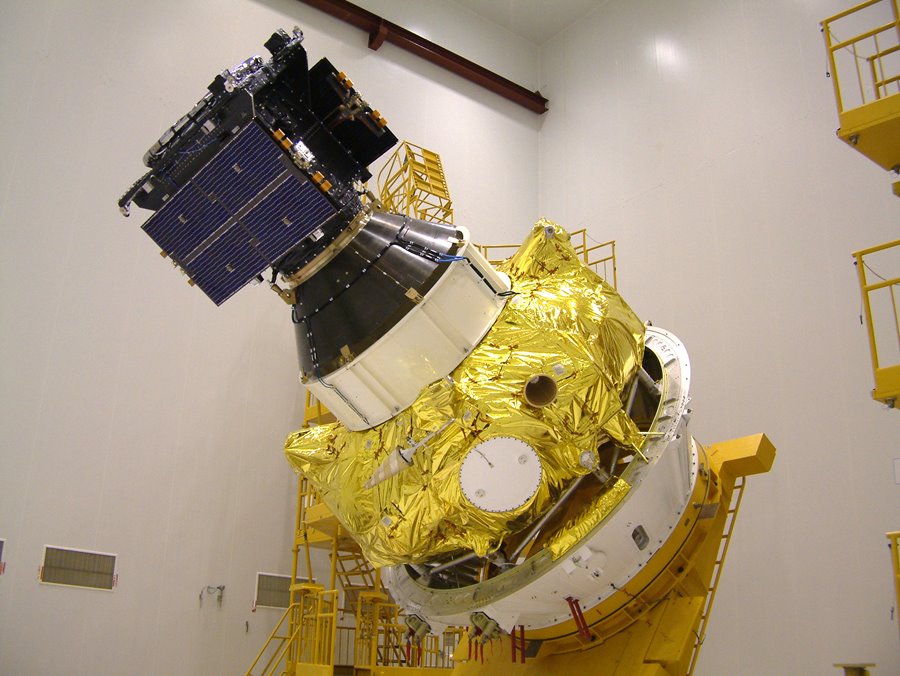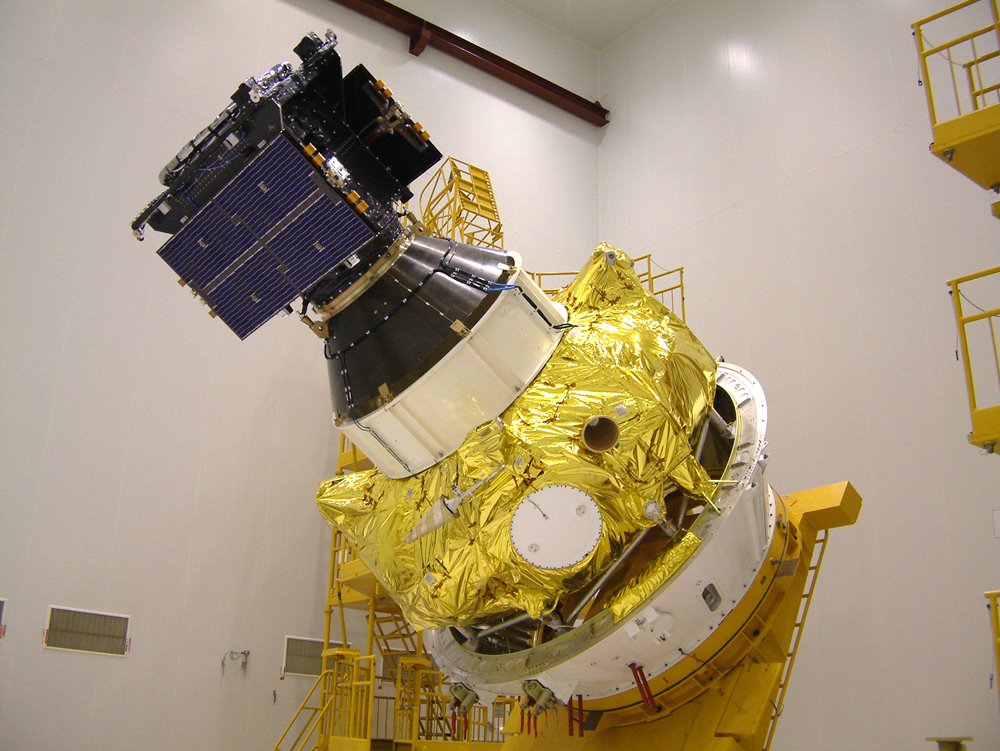
Surrey Satellite Technology Ltd (SSTL) has successfully de-commissioned GIOVE-A, the pathfinder satellite for Europe’s Galileo constellation, after 16 years of operations in Medium Earth Orbit (MEO). The decision to de-commission the satellite was made due to the obsolescence in computing systems required for the operation of GIOVE-A, and de-commissioning of the spacecraft took place on 24 November 2021. The procedure involved transitioning the satellite to Earth pointing mode , turning off the reaction wheels and setting the attitude and orbit control system to standby mode, before finally switching off the on board computer and transmitter.
GIOVE-A was designed, built and tested by SSTL in only 30 months for the European Space Agency (ESA) and was launched on 28 December 2005 with a mission to secure vital frequency filings, generate the first Galileo navigation signals in space, characterise a prototype rubidium atomic clock, and model the radiation environment of MEO for future Galileo spacecraft. GIOVE-A was the first European satellite launched into the demanding MEO radiation environment, where it greatly out-performed its 27 month design lifetime.
Sir Martin Sweeting, SSTL’s Executive Chairman, summed up GIOVE-A’s achievements by commenting “GIOVE-A was a milestone mission for SSTL that demonstrated how our pragmatic approach and innovative, low cost, small satellites could deliver critical mission requirements for landmark space programmes, such as Galileo. GIOVE-A secured the vital frequency filings with the International Telecommunications Union (ITU) on the 12th January 2006 and completed its original mission for ESA in 2008. GIOVE-A also over-delivered on its original lifetime and mission goals, and hosted experimental SSTL hardware which provided additional valuable data about the MEO environment for more than ten years – an inspiring and game-changing mission on so many levels.”
“If not for GIOVE-A the 26 Galileo satellites in orbit today would not exist,” comments Paul Verhoef, Director of ESA’s Directorate of Navigation. “Its speedy development and launch opened the way for our working constellation to follow.”
After completion of its mission for ESA, GIOVE-A was manoeuvred into a higher “graveyard” orbit at 23,300km above the Earth to make way for the first fully operational capability Galileo satellites. In 2012 SSTL took over operations from ESA and GIOVE-A continued to provide valuable in-orbit data on the MEO environment. The Merlin radiation monitor on-board GIOVE-A collected a unique 10+ year record for the MEO orbit and data analysis at the Surrey Space Centre, supported by ESA, showed some interesting features such as the “electron desert” in 2008/9 during what was the lowest solar minimum of the space era, and one of the largest electron storm events on record in April 2010. Several scientific journal papers have been published from the radiation data generated by GIOVE-A and a new model of the outer Van Allen belt electron fluxes, ‘MOBE-DIC’, has been produced to help improve future satellite designs.
Monitoring of the rubidium clocks on board GIOVE-A, key data for the Galileo constellation that followed, revealed no issues during the 6.5 years that the navigation payload was operational.
Also onboard GIOVE-A was an experimental SSTL GPS receiver, the SGR-GEO, which in 2012 achieved a GPS position fix at 23,300km altitude - the first position fix above the GPS constellation on a civilian satellite. This demonstrated a new timing and orbital positioning solution for satellites operating in orbits higher than 20,000km which can only receive a few of the weaker GPS signals that “spill over” from the far side of the Earth.
The SGR-GEO was subsequently used to track many signals from GPS satellites, including the sidelobes not normally visible to ground-based systems. The performance of GNSS receivers at high altitudes is very sensitive to sidelobe strength, and data from the SGR-GEO helped to map out the antenna patterns of GPS satellites for use in planning navigation systems for future high altitude missions in geostationary orbit , lunar orbit, and beyond into deep space.
In 2010 SSTL was awarded a contract to assemble, integrate and test the first navigation payloads for the full operational capability Galileo spacecraft, and over a period of 10 years SSTL supplied a total of 34 navigation payloads for Galileo, Europe’s global navigation positioning constellation.
GIOVE-A carries an engraved plaque in tribute to SSTL engineer, Tom Fairbairn, who tragically lost his life in the 2004 Indian Ocean Boxing Day Tsunami. Tom worked as a payload mechanical engineer on GIOVE-A and is warmly remembered by colleagues at SSTL.
About Galileo
Galileo is currently the world’s most precise satellite navigation system, serving more than two billion users around the globe.
The Full Operational Capability phase of the Galileo programme is managed and funded by the European Union. The European Commission, ESA and EUSPA (the EU Agency for the Space Programme) have signed an agreement by which ESA acts as design authority and system development prime on behalf of the Commission and EUSPA as the exploitation and operation manager of Galileo/EGNOS. “Galileo” is registered as a trademark in the database of the European Union Intellectual Property Office (n° 002742237).
ENDS
Notes to editor:
Full size accompanying images for this press release can be downloaded at the bottom of this page.
Press Contact:
Joelle Sykes, PR Manager, SSTL
Tel: +44 (0)1483 804243
Mob: 07775 000853
Email: jsykes@sstl.co.uk
Twitter @SurreySat
Instagram @surreysatellites
#DoingSpaceDifferently
About SSTL
Surrey Satellite Technology Limited (SSTL) is at the forefront of space innovation delivering customisable complete mission solutions for Earth observation, science, communications, navigation, in-orbit debris removal and servicing and exploration beyond Earth infrastructure.
Since 1981, SSTL has built and launched 70 satellites for 20 international customers, as well as providing training and development programmes, consultancy services, and mission studies for ESA, NASA, international governments and commercial customers.
SSTL is well known for innovative missions such as the CARBONITE satellites, the NovaSAR S-band radar imaging satellite and the RemoveDEBRIS space debris removal technology demonstrator.
Headquartered in Guildford, UK, SSTL is part of Airbus.
Download PDFImages

Download Hi-Res
